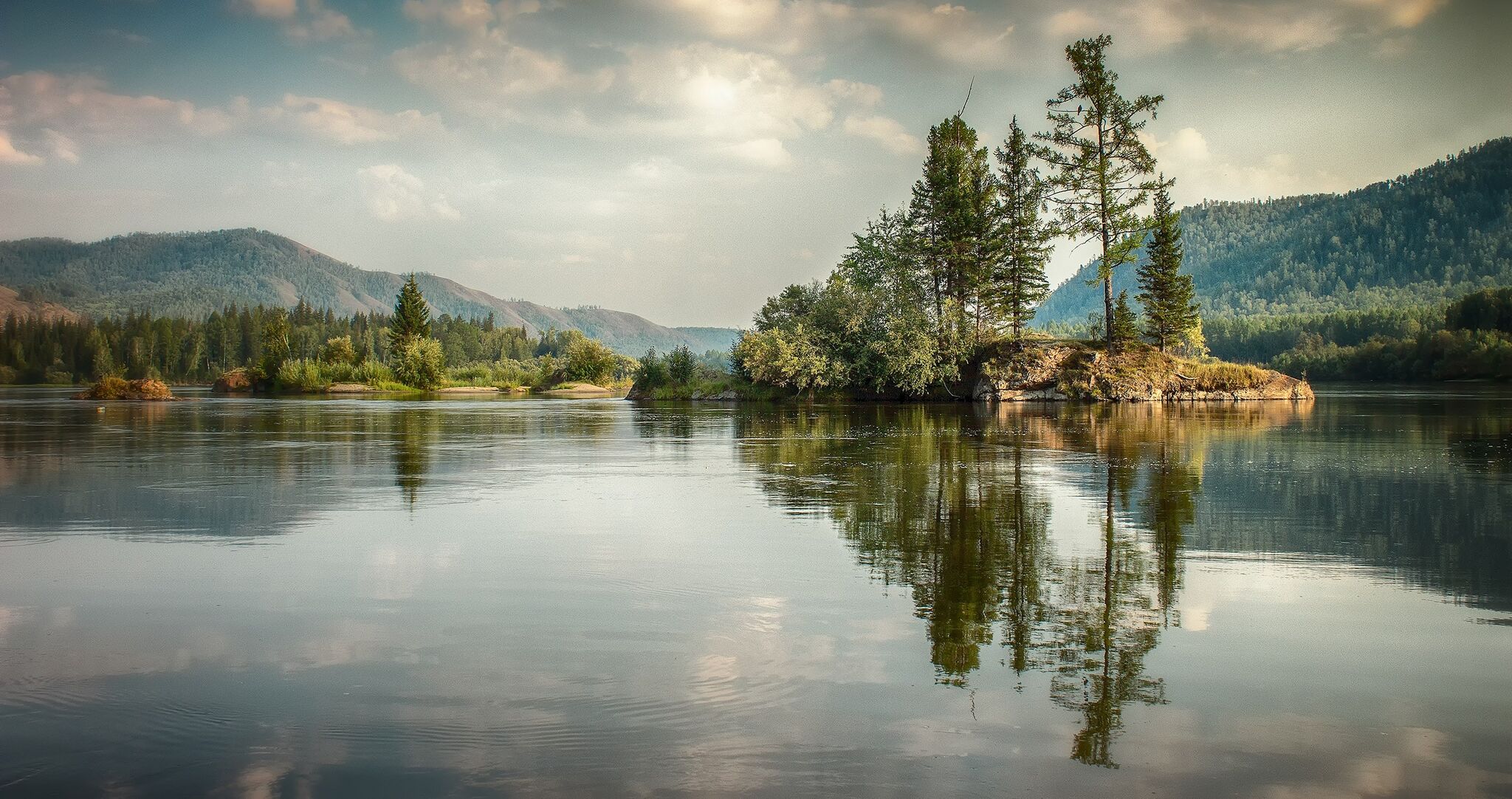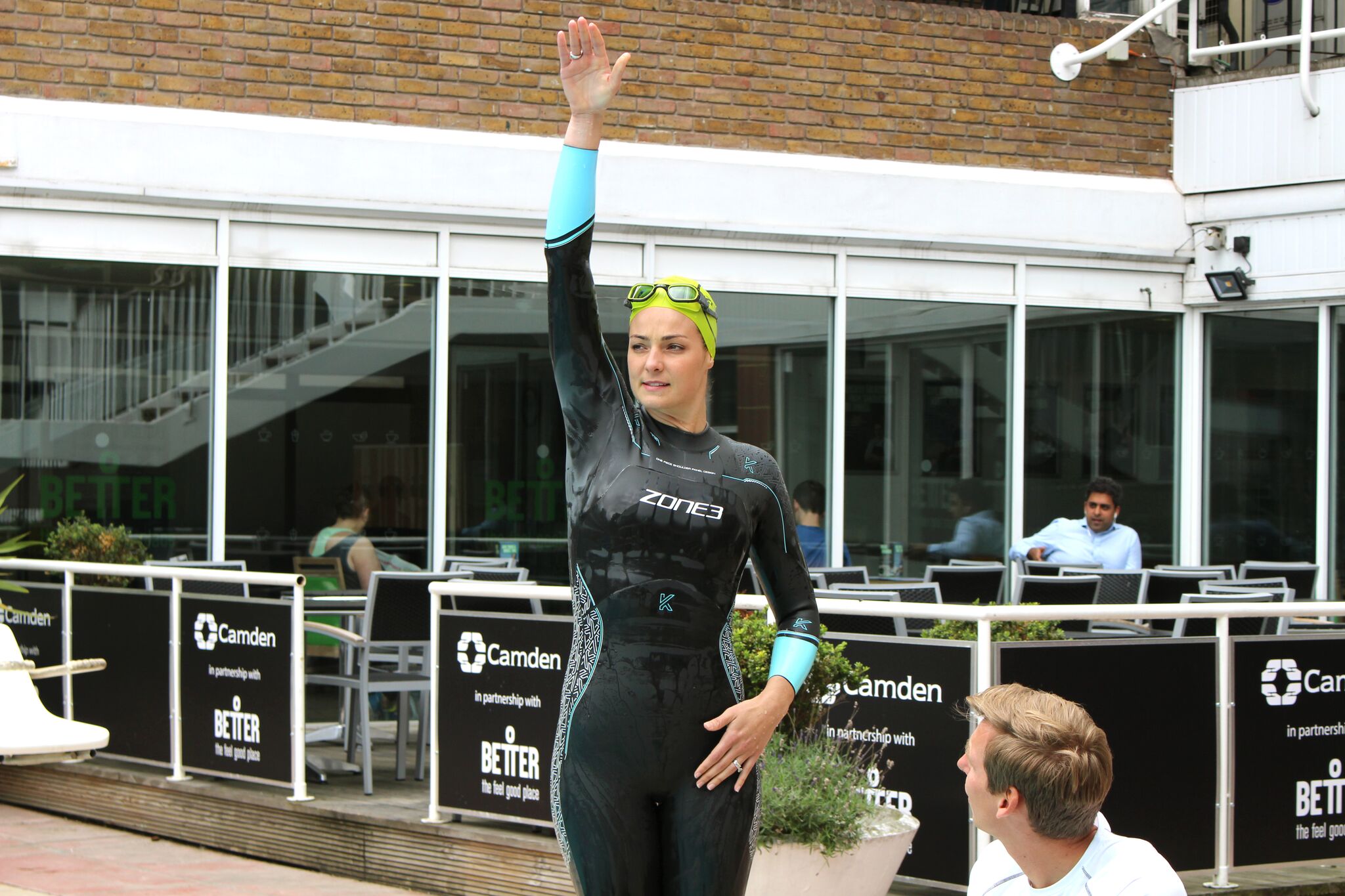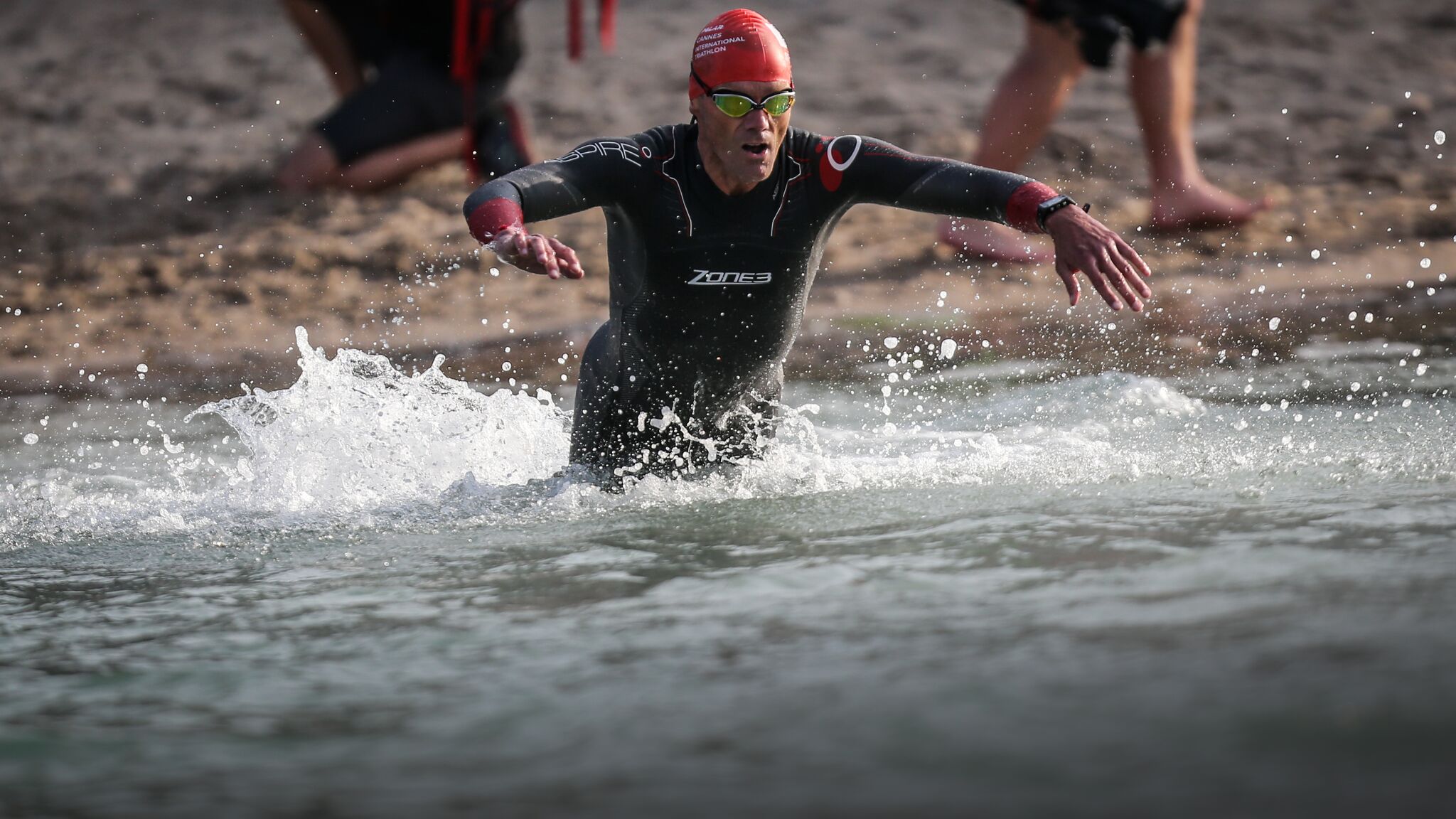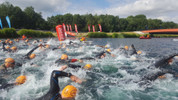Free Open Water Racing Tips!
23rd Oct 2018
Use these pro tactics to save valuable seconds in the swim section of your next race!
The Professional Triathlete does the sports for a living. The Age Grouper does it for the love. What can you as an age grouper learn from the Pro? Don’t forget, they too started off in the amateur ranks and worked their way up to the elite level. They too needed guidance and had to learn from their predecessors. You can pick up some valuable ammo from the Pro’s when we go open water triathlon racing. By keeping it simple and incorporating the following five open water tricks into your swim race routine, you too can save valuable time at the next triathlon event.

1. Position, Position, Position.
You can easily save up to 1 minute in your overall swim finish time simply by standing in the right place before the start. How is that possible you may ask? Well, let me recall my own exploits. These experiences were at a world cup race in Sydney way back in 1997 and the World Triathlon Championships that followed about a month after that in Perth. For Sydney, I had the idea of starting on the far left of the pontoon whilst the rest of the pro field huddled on the right. I figured, that to have some open water to myself on the left would be a lot faster than the washing machine boxing match on the right. Bang, the gun goes and we are off. By halfway, I was trailing and came out 3rd last as I plunged back into the water for lap 2. Fortunately, with a lot of effort, I managed to get back into the 3rd pack during the swim and that was enough to move me up the field on the bike leg. Had I missed that pack, my race would have been history before it even started simply because I botched the swim start by standing in the wrong position. Fast Forward 4 weeks later and I am lining up with Simon Lessing, Greg Welch, Chris McCormack and co, at the World Champs in Perth. This time I opted for the huddle on the right and figured I would gun it from the start and hope for the best. I managed to get myself in front by turn 1 and eventually came out of the water in 3rd spot just behind Lessing and ahead of some of the best in the world. How did I do it? I stood in the right position before the start of the race. I did not swim much faster than I did in Sydney, but managed to get to the front of the pack this time. How do you learn from this? The same rule applies. How will position help you? You get to swim with faster swimmers and more often than not, are virtually "pushed" from behind into a faster swim time. You also gain more self-confidence from swimming closer up front in the field, and that often delivers faster swim times. So, look out for a good starting position, it could shave minutes off your swim times.

2. Warm-up before the plunge
You might notice that the pro’s often go through a rigorous swim warm-up routine before the start of any race they participate in. They need to be geared and ready to go when that gun goes off. Their heart rate will go from 70 bpm to 160bpm in less than 50m. Without a good warm-up routine, these pro’s will lack the firepower needed to swim hard from the start and by the time they find their rhythm, the race leaders will be long gone. You never feel fantastically good when you first climb into a pool to start your swim training sets, do you? You need a couple of laps before you get into the groove and swim faster, right? The same rule applies to the races.
You cannot expect to swim fast if you dive into the water "cold". What you need to do is get in the water prior to the race start and swim for a few minutes. A couple of 20m sprints with some easy swimming in between should do the trick. We are talking maximum 5 minutes in the water before you get out and wait for the gun. You can certainly save at least 30 seconds plus by warming up adequately over an Olympic distance triathlon. I do concede that at some events it may not be possible to get into the water and warm-up, either due to the water being extremely cold or due to the race organisers and logistics. You then need to take along a set of rubber cords and do some dry land swimming with the cords where you simulate the freestyle stroke and loosen up the arms and shoulder. Not the ideal, but certainly better than no warm-up at all.

3. Swim Straight
This sounds pretty self-explanatory. However, you would be amazed at how bad a triathletes navigational skills are when they plunge into the water. If you lack the skill to swim straight to the marker buoys, you could end up swimming as much as 200m further over a 1500m swim. That 200m "extra" swim distance can turn into at least a 4 minute plus add onto your finish time over the Olympic distance. You need to be sure of the exact course yourself and not be content to rely on the athletes in front of you, hoping they will swim straight and you can just follow. Before the swim start, look for land markers on the route that you can use to navigate your way around the swim course. A good pair of goggles is also essential to ensure that your vision is not restricted and you can see the marker buoys easily enough. If your goggles do mist up or take in water during the swim, stop and take a few seconds to fix them, look up and make sure you are on the right "straight" line before continuing to swim on.

4. Draft
Yes it is legal to draft in the swim section of any triathlon. It does not produce the exact same benefits as drafting does say on a bicycle. But, it can certainly help you swim faster and save you energy during the race. The idea is to find an athlete or pack of swimmers that are swimming slightly faster than you. Then, hook in and try to swim off their pace. The ideal position to draft off in the swim: Swim either to the left or right of the swimmer in front of you. Position your head around their knee/hip area. It does take some practice swimming so close to someone without actually hampering their stroke or yours. Second best spot to draft off would be to swim on someone’s feet. The only problem being the lack of vision as their kicking motion produces air bubbles which can make the swim extremely annoying and uncomfortable. Just off the feet and to the side of the swimmer in front of you is the better position to draft off with. You will be amazed at how much easier it is to swim when the swimmer in front of you "toes" you around the swim course; It will make you much faster too. You often hear the war stories after the race of how someone "just missed" the swim pack in front of them. And, had they managed to get on the feet, how much faster their swim time would/could have been. They are not just talking big; Drafting in the swim can potentially save them and you both time and energy reserves at the next race stop.

5. Start fast! What?
This last trick relates directly to the trick of drafting off the swimmers in front of you. If you do not start fast, you often end up swimming with the slower swimmers and chasing for the entire swim. This is especially over the shorter distances of Sprint and Olympic triathlon. The problem with starting fast is that you need to train your body to be able to do it. Starting too fast for some will result in them "blowing" completely out in the water at the halfway point and limping home for their slowest swim times ever. You need to simulate a race start in training and open water swim practices. "Fartlek" swim training: This is the best method of training your body to adapt to being able to start fast during a race. Then, settle down into a comfortable pace and rhythm (lowering your heart rate). After that, still being able to pick up the pace again near the end of the swim. Fartlek training requires you to swim fast, then slow, then fast again during training. These so-called mini speed intervals during some of your sets will help condition the body to adapt to the rigors of starting fast during the race and then swimming comfortably the rest of the way. If you can start fast and then remain comfortable for the rest of the swim, you will swim faster.
These 5 Open Water Swim tricks will go a long way toward helping you swim faster. They all seem pretty obvious. So, put them into practice and you will be sure to swim faster at the next race you do.
Are you interested in the new 2018 Ranges from the main triathlon brands? Follow the links below to discover more:

